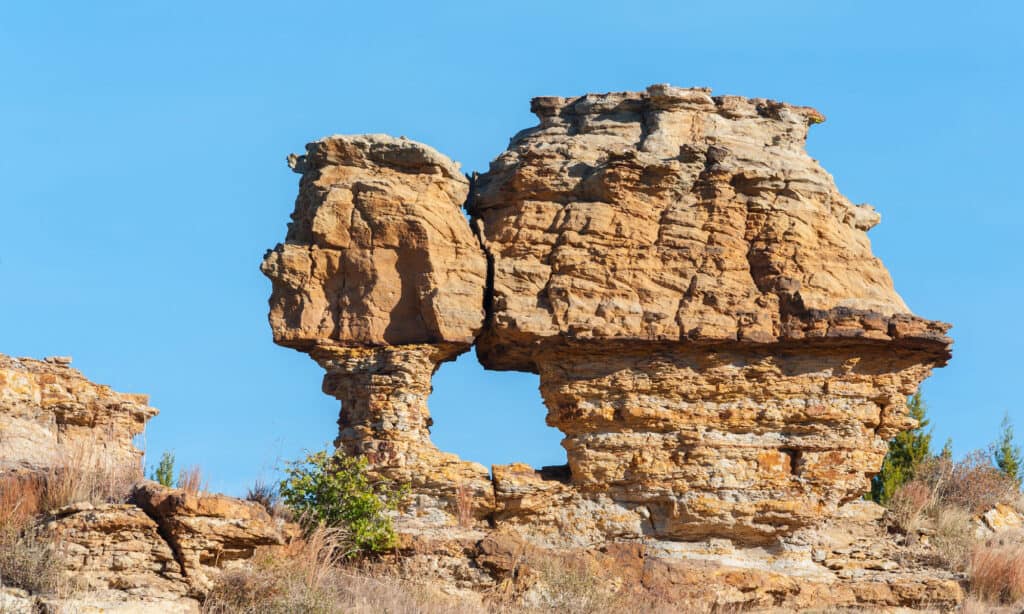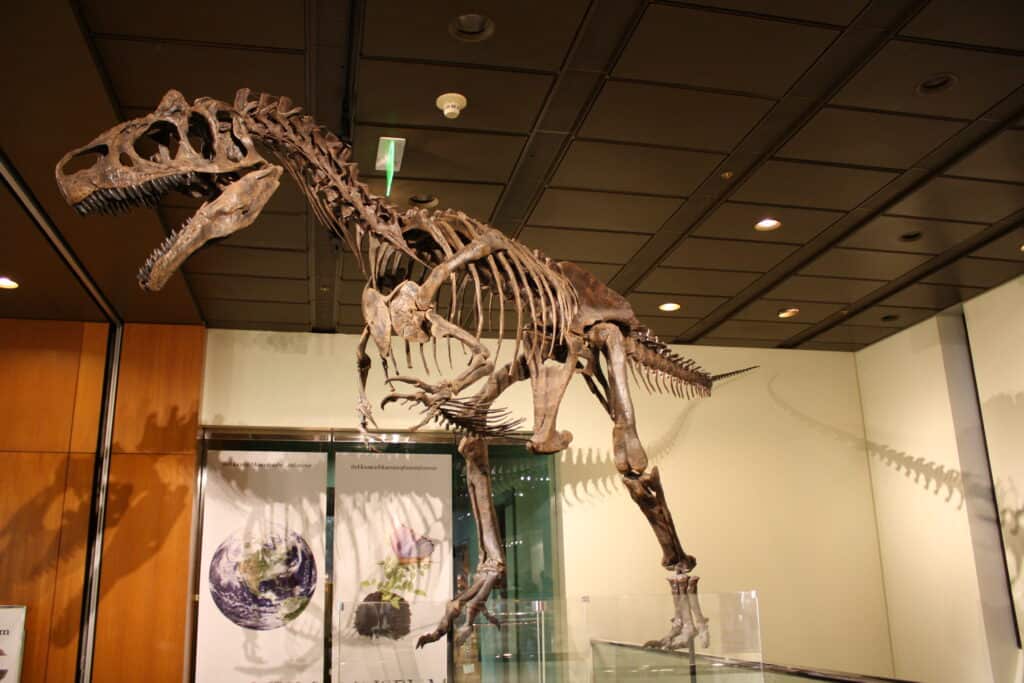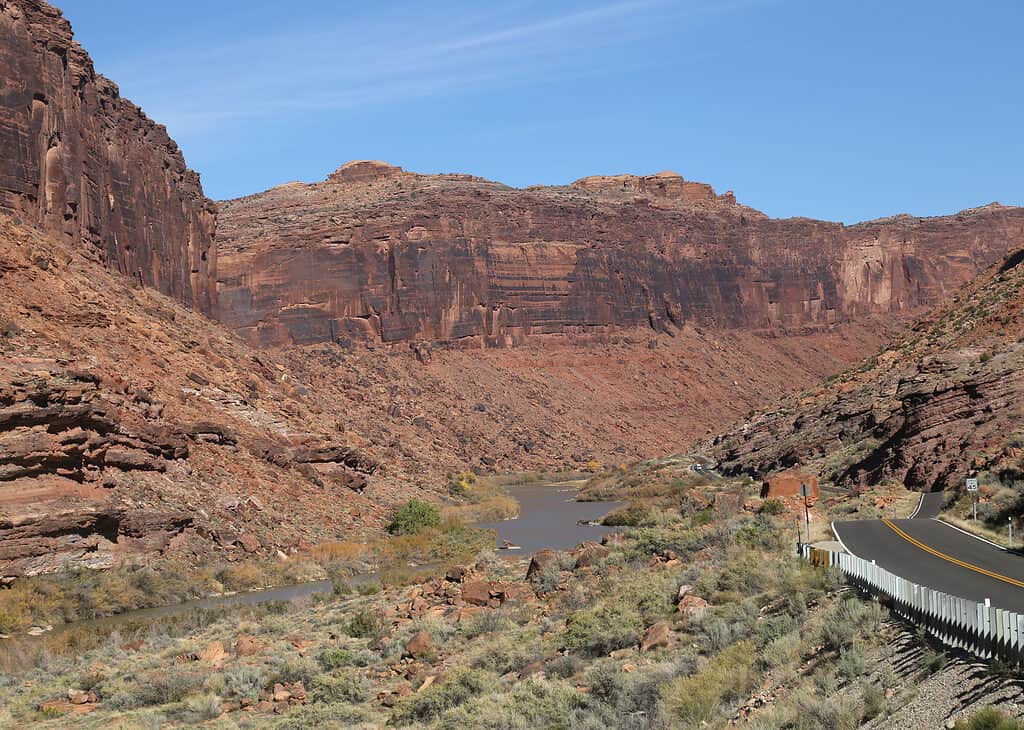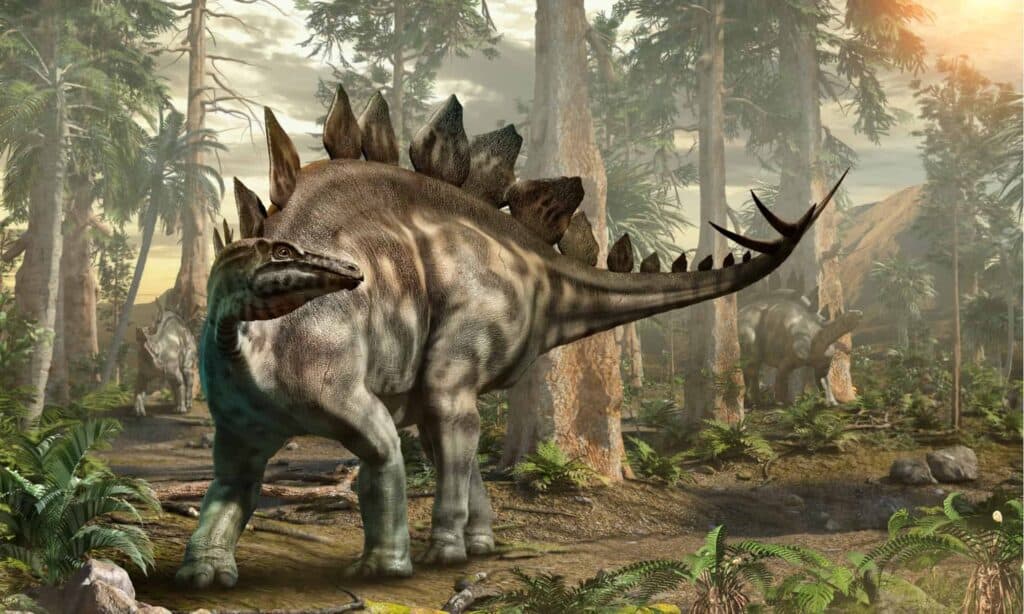The world is home to many geological formations that hold key information concerning the past. The places where these rock formations appear around the world give scientists a look at the world’s history. Sometimes, the formations even contain remnants of life that existed hundreds of millions of years ago, like the Morrison Formation. What is the Morrison Formation? Why have so many dinosaur fossils been found in its sediments?
These are important questions to answer, and that’s the goal of this article. Learn where the formation is, what it’s made from, and what fossils have been found in the area in the past.
What is a Geological Formation?

Geological formations can show millions of years of history.
©iStock.com/GracedByTheLight
We must turn our attention to another question before we ask, “what is the Morrison Formation?” First, it’s necessary to understand geological formations. A geological formation is a unit of rock that has a unique appearance that allows geologists to differentiate that unit from other nearby rock layers.
Oftentimes, the formations are named for their location where the rock exposure occurs. When looking at formations that are millions of years old, it’s safe to assume that most of the rock is buried beneath other layers leading up to the surface. Scientists map the exposures to determine how far the formation extends.
The type of rock present at a geological formation may also be used as a means of naming it. This naming convention typically occurs when the formation is primarily one type of stone. The Entrada Sandstone formation was named in such a way.
Knowing the definitions of geological formations, it’s possible to consider the Morrison Formation in greater detail.
What is the Morrison Formation?

Allosaurus (Big Al II) was discovered in the Morrison Formation.
©andytang20 / Flickr – License
The Morrison Formation is a geological rock unit formed in the western part of North America and a major source of dinosaur fossils on the continent. The formation stretches as far north as Montana and as far south as New Mexico. However, the rock formation is not named for either of those places. Instead, the formation was named after Morrison, Colorado.
Morrison was the town where the first dinosaur fossils were discovered in the formation by a man named Arthur Lakes in 1877. The discovery of large dinosaur fossils in the area would result in the town and the formation becoming a main site of the ongoing fossil race later called the “Bone Wars.”
The Morrison Formation is believed to be roughly 155 to 148 million years old from the oldest to newest layers. That means this rock formation was created during the Upper Jurassic period, a time when dinosaurs were common in North America.
As anyone can tell, the Morrison Formation was not named for the type of rock in the rock unit. That’s because the formation is made from four different types of sedimentary rocks including. These include limestone, mudstone, siltstone, and sandstone. These rocks appear red, light gray, and greenish-gray in color.
Where is the Morrison Formation Located?

Colorado and Utah have great exposures of the Morrison Formation.
©vagabond54/Shutterstock.com
The Morrison Formation is believed to cover a total area of about 600,000 square miles. However, most of the formation is still underground, covered by millions of years of younger rock.
Scientists believe that the formation is primarily located in Colorado and Utah. However, the formation is also found in many other states, including:
- North Dakota
- South Dakota
- Arizona
- Idaho
- Oklahoma
- Texas
- New Mexico
- Nebraska
- Kansas
- Montana
Needless to say, this formation is vast since it is found in so many areas. Knowing where the formation is and how it was formed provides key details for determining why so many specimens have been found in the area.
What Made This Area Rife with Fossils?

Animals must die and get buried without being disturbed to form fossils.
©Natalia van D/Shutterstock.com
The Morrison Formation in the western United States has yielded hundreds of different dinosaur fossils. Why is that the case? What makes this area so unique that so many dinosaurs would end up buried in what would later become sedimentary rock?
First, we need to consider the requirements for a fossil to form. Generally speaking, three conditions must be met for fossils to form, including:
- The animal has to have some hard organic parts like bones.
- The body must be buried in a place lacking oxygen and away from scavengers.
- The sediment must have favorable conditions.
Fossils are commonplace in the Morrison Formation because they were formed at the right time, at the right place, and with the right materials. After all, these rocks formed near the end of the Jurassic Period and the start of the Cretaceous Period. Many dinosaurs lived around that time.
Also, many of the areas near the formation were floodplains and rivers from the greater amount of water that covered North America. These conditions were present as many dinosaurs died around bodies of water. As a result, their bodies sank into mud or were otherwise covered by sediment. That removed scavengers from the equation and introduced the right sorts of sediment needed to form fossils over time.
Now we know about the composition of the Morrison Formation and why so many dinosaur fossils were found there. There’s one last piece of the puzzle to examine.
Dinosaurs Found in the Morrison Formation

Fossils of Stegosaurus were found in the rock formation.
©Warpaint/Shutterstock.com
Scientists have uncovered fossils belonging to roughly 37 different genera of dinosaurs in the Morrison Formation. These fossils vary in many ways. Some of them are true fossils while others are merely eggs or tracks.
Among the most well-known dinosaur fossils found in the area are:
- Stegosaurus stenops
- Brachiosaurus altithorax
- Diplodocus longus
- Allosaurus fragilis
This is just a handful of the different sorts of dinosaurs that have enraptured geologists over the years. Future discoveries are waiting to be made at the outcroppings of this formation. However, people will never know even half of the fossils in this formation since they are buried hundreds of feet below the surface.
The photo featured at the top of this post is © Tomás Del Coro / Flickr – License / Original
Thank you for reading! Have some feedback for us? Contact the AZ Animals editorial team.






